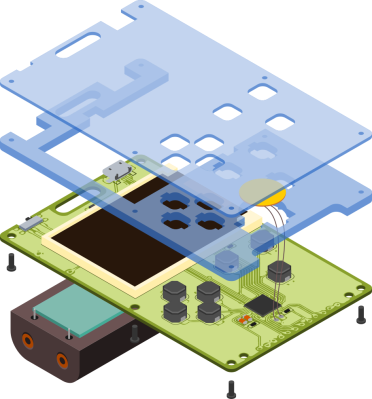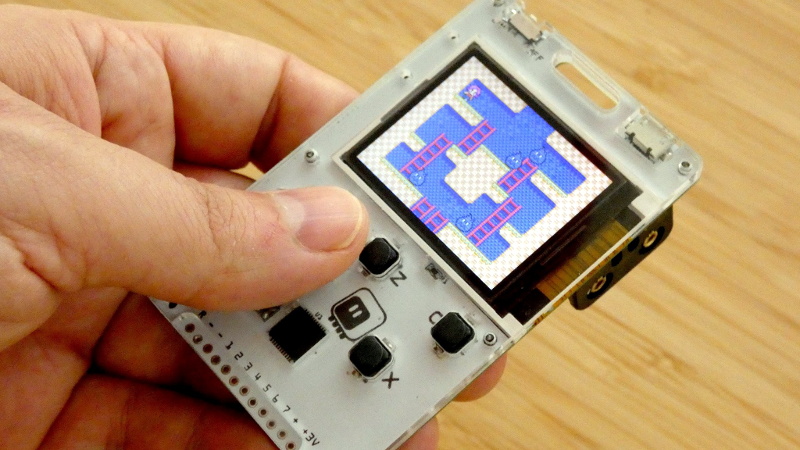It’s often said that “getting there is half the fun”, and we think that can be just as true when building hardware as it is during the roadtrip to your favorite hacker con. Many of us enjoy the process of planning, designing, and building a new gadget as much as playing with it when it’s done. We get the impression [Radomir Dopieralski] feels the same way, as he’s currently working on yet another iteration of his PewPew project.
 For the uninitiated, [Radomir] has already created a number of devices in the PewPew line, which are designed to make programming games on “bare metal” easier and more approachable for newcomers by using CircuitPython.
For the uninitiated, [Radomir] has already created a number of devices in the PewPew line, which are designed to make programming games on “bare metal” easier and more approachable for newcomers by using CircuitPython.
The original version was a shield for the Adafruit Feather, which eventually evolved into a standalone device. The latest version, called the M4, includes many niceties such as a large TFT screen and an acrylic enclosure. It’s also switched over to the iconic Game Boy layout, to really drive home that classic gaming feel.
As [Radomir] explains, previous versions of the PewPew were designed to be as cheap and easy to manufacture as possible, since they were to be used in game programming workshops. But outside of that environment, they left a little something to be desired. With the M4, he’s created something that’s much closer to a traditional game system. In that respect it’s a bit like the Arduboy: you can still use it to learn game development, but it’s also appealing enough that you might just play other people’s games on it instead.



















That looks cute. I like that we’ve reached the age where pretty much anyone can make a color handheld.
Nice hack,well thought out. It would be better though it was say 3-4x bigger so those of us with bigger hands can build and play with it
Unfortunately size is directly related to price and shipping costs. Also, I would love to have a bigger display with the same resolution (with physically bigger pixels), but that is the biggest I could find.
Typo spotted, it’s [de∫hipu]
:o)
GG!
Dla mnie ma jedną zaletę, gotowiec. Kupuję, instaluje co chce i działa. Nie tak jak większość projektów, nie ma zasilania (bo każdy umie przecież zrobić). A jak z siecią? Planuje się? Jak z kompatybilnością oprogramowania? Da się zainstalowac cokolwiek znanego? SDL2 na ten przykład? X11
Kolega chyba trochę nie doczytał. Jeśli się koledze uda uruchomić X11 na 128kB RAM i 256kB dysku, bez systemu operacyjnego, to będę pełen podziwu. Sieci nie ma i się nie planuje (choć oczywiście da się podłączyć zewnętrzne ESP32 z odpowiednim firmwarem i używać Adafruitowych bibliotek do sieci, bo to wszak standardowy CircuitPython).
Hi.
I have been building Arduboys with year 13 for the last 5 or so years. It would be great to be able to build this with my kids. Can I get hold of pcbs schematics and the like? I would also be very interested in teaming up. We have a professional games developer working with the school. He has been putting in time developing lesson plans to get kids using C++ to develop games. I want to take this further next year and a colour hand held would be fantastic. I will not mention the name of his employer here but they are very keen on supporting community and schools. They want to get kids into coding. They have a number of well known commercial products.
I would like to get far more schools using an open source portable like the Arduboy. The Adafruit Pygamer looks very flexible but the price is still a bit high. Also the idea of having students construct the pcb themselves is also a very good experience. The Squaretomato portable gaming unit also looks cool and compact.
Let me know if you would like to team up on developing lesson plans and a build in school low cost option.
Steve.